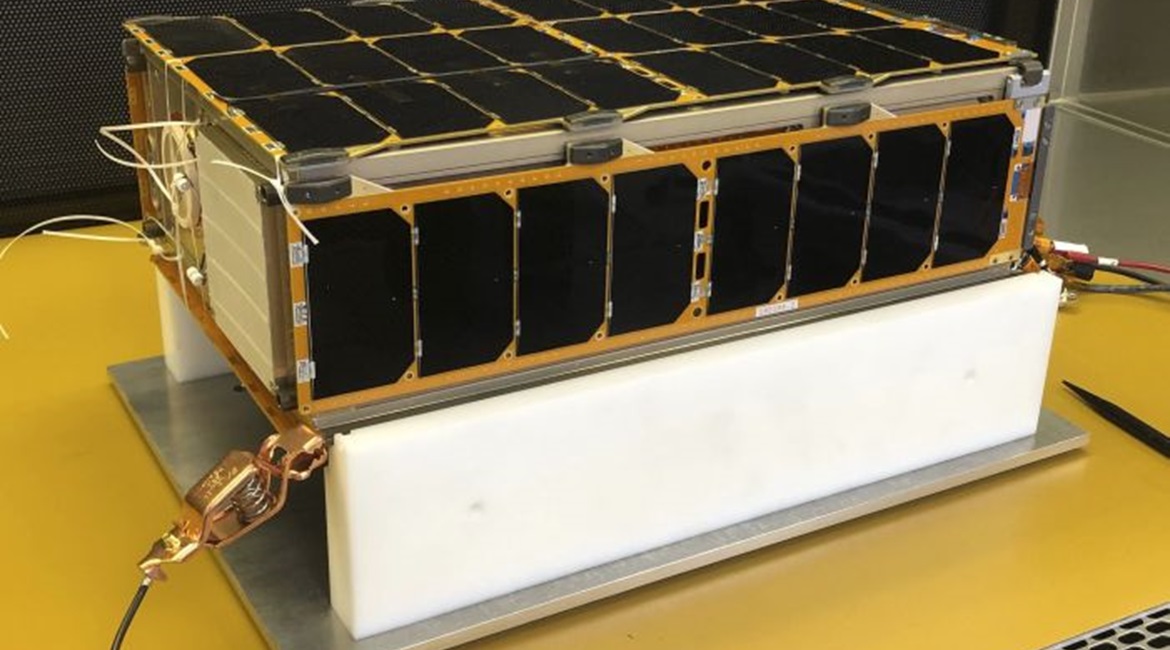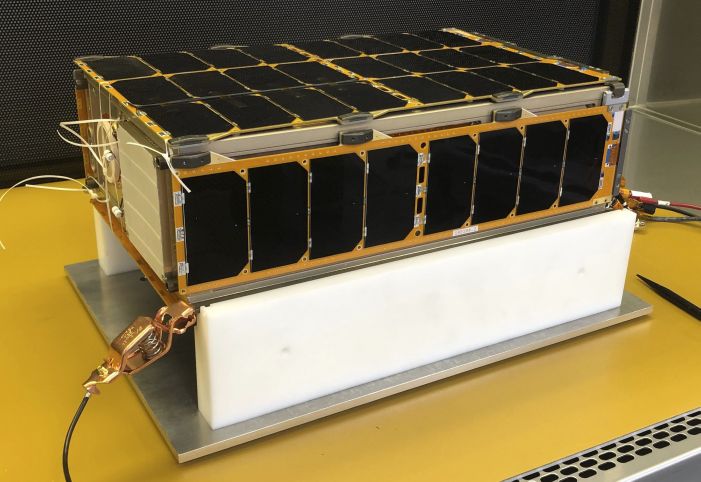
The US Air Force Research Laboratory’s (AFRL’s) space vehicles directorate on 29 June broke ground on a two-storey, 3,962 m 2 facility at Kirtland Air Force Base in New Mexico that will serve as a one-stop shop for small satellites.
Christopher Paul, AFRL space vehicle directorate small satellite portfolio lead, told Janes on 7 July that this Rapid Architecture, Prototyping, and Integration Development (RAPID) Laboratory will enable the AFRL to go from a new, clean sheet idea through all phases of a satellite’s life cycle.

Air Force Research Laboratory’s Very Low Frequency Propagation Mapper (VPM) satellite. (Air Force Research Laboratory)
The laboratory will focus on analysis, concept development, design, and operations of small satellites. It can also house prototype mission design, fabrication, assembly integration, and test (AI&T), on-orbit operations, and data analysis in a single facility, and at various classification levels.
The RAPID Laboratory, expected to be completed in April 2021, will accommodate AFRL small satellite programmes such as the Globalstar Experiment and Risk Reduction Satellite (GEARRS), the Satellite for High Accuracy Radar Calibration (SHARC), and the Very Low Frequency Propagation Mapper (VPM) mission. Paul said that the small satellite portfolio is working on five additional programmes, including Ascent and Hydra, which are demonstrations in geosynchronous equatorial orbit (GEO); XVI and Recurve, which are demonstrations in low Earth orbit (LEO); and Hybrid Architecture Demonstrations (HADs), which include a partnership with eight US allies.
The VPM is a six cubic unit (6U) nanosatellite designed to augment the AFRL’s Demonstration and Science Experiments (DSX) satellite launched in June 2019. DSX is a larger spacecraft, weighing about 500 kg, studying the magnetosphere from an elliptical 6,000 × 12,000 km altitude medium Earth orbit (MEO).
Looking to read the full article?
Gain unlimited access to Janes news and more...




